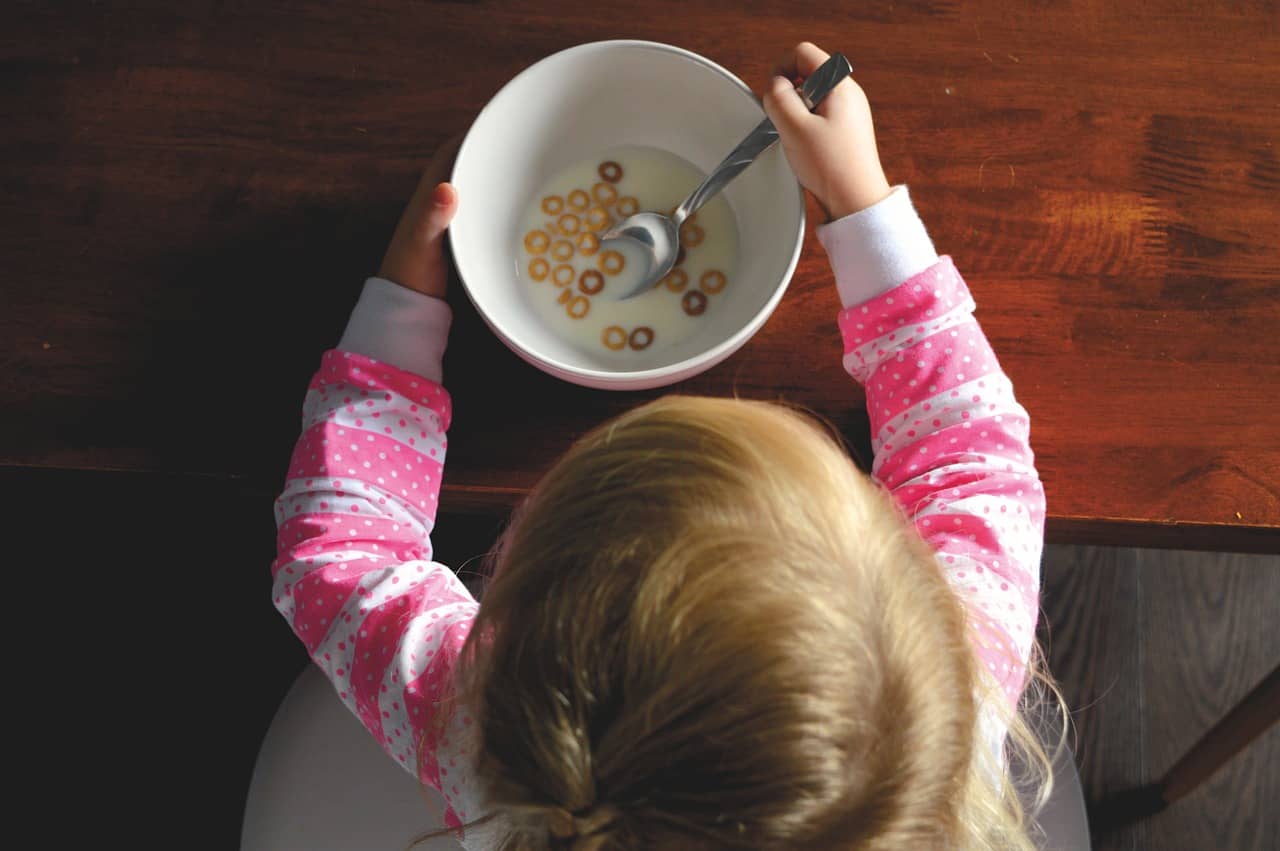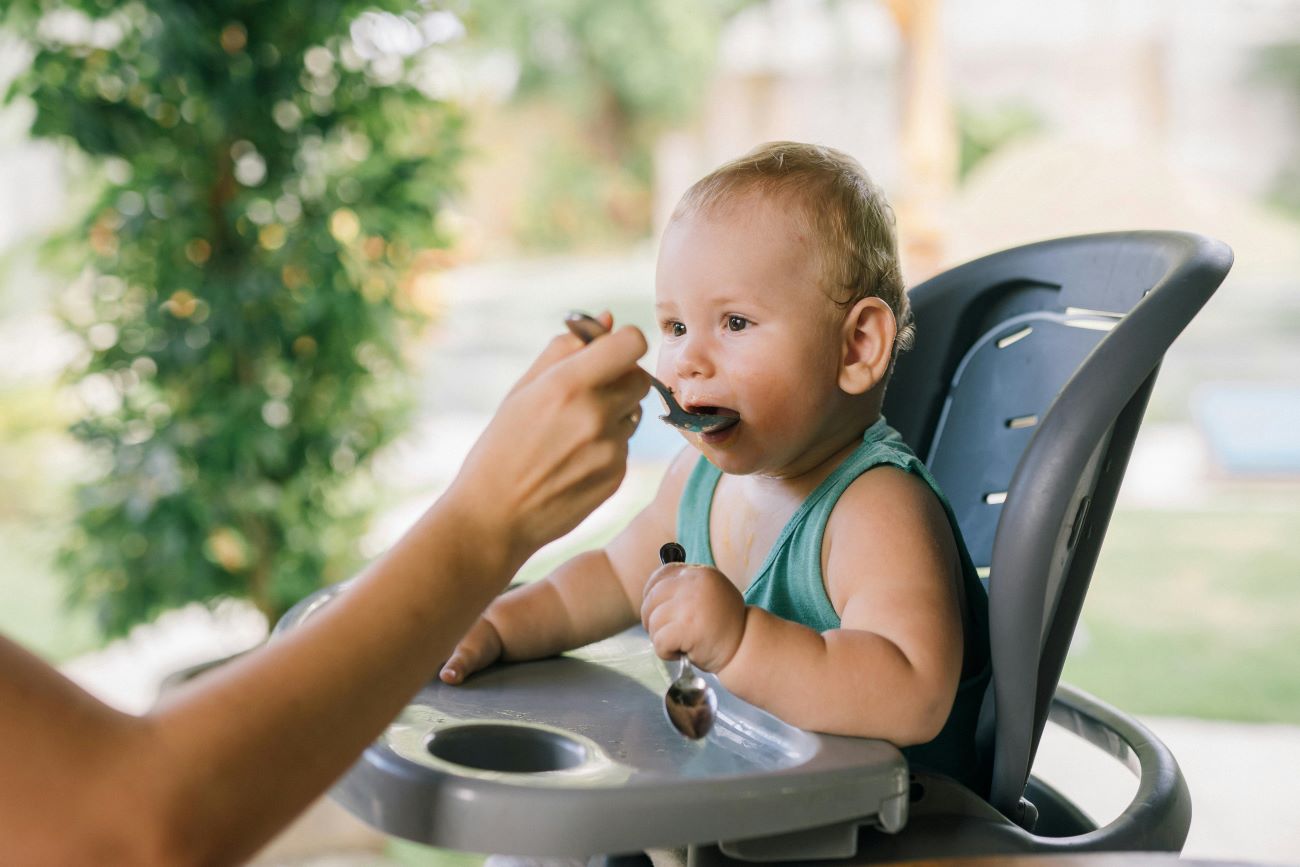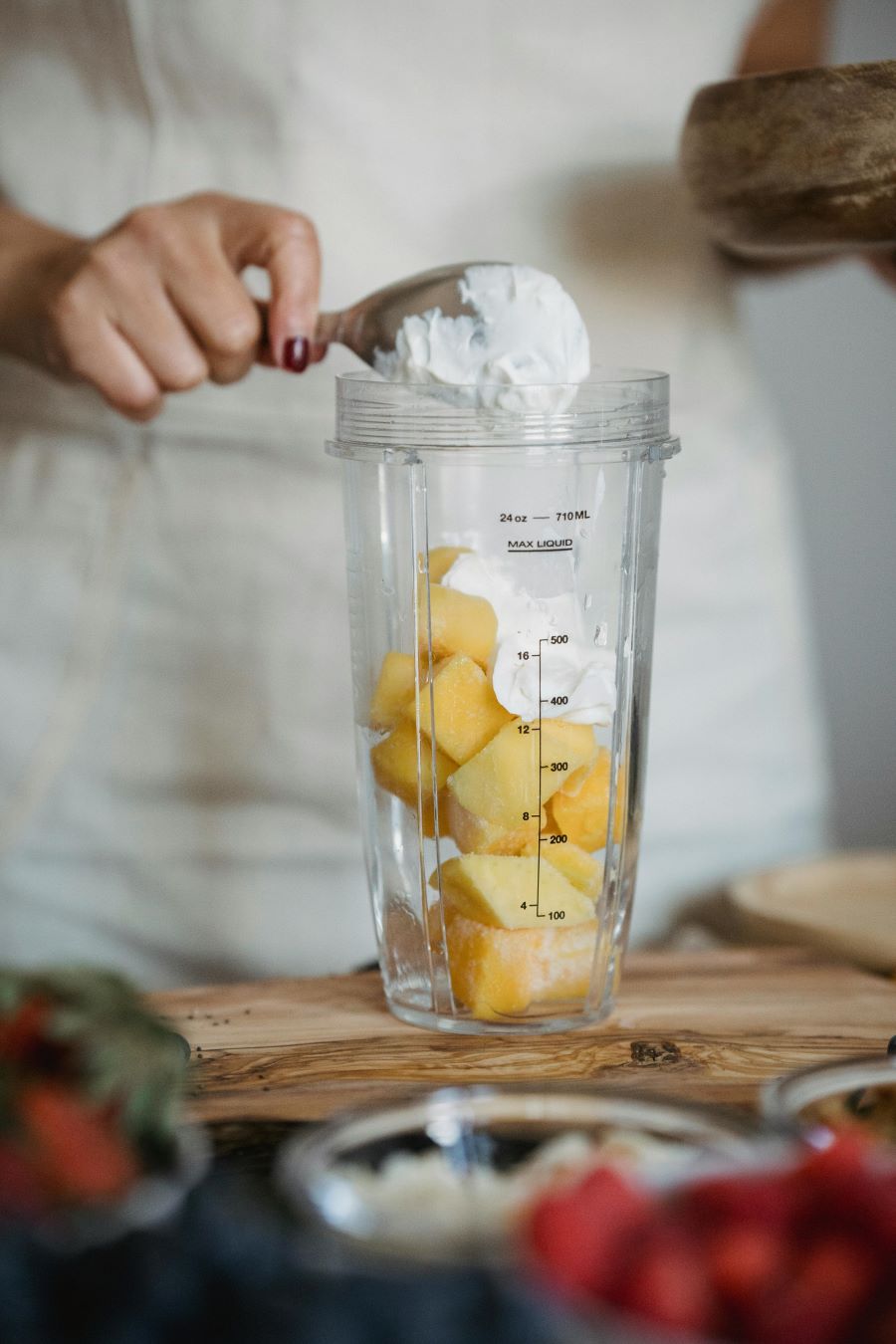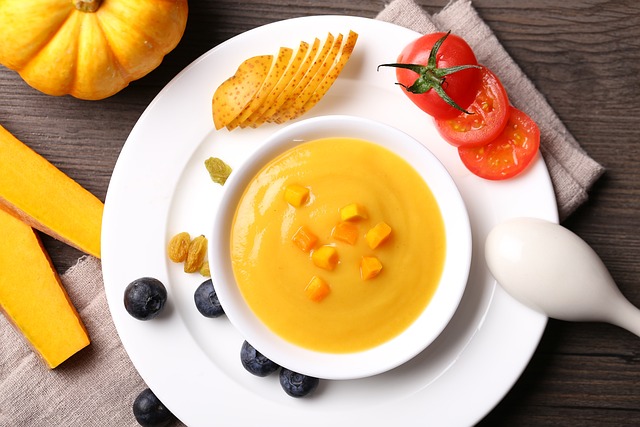Can babies eat pureed Chicken? Yes! This guide explores when to introduce Chicken to your baby (around six months), its benefits (iron-rich, easy to digest), safe preparation tips (lean, cooked thoroughly, puree smooth), and fun ways to introduce it (mixed with veggies and fruits).
Learn about potential allergens and safety reminders for a stress-free mealtime adventure!
Baby Food
A baby food is a particular type of product. This food is for infants who are just beginning to consume solid meals. Ingredients have been carefully selected to be easy for infants to digest and consume.
These meals come in small jars or packets. These meals are made from ingredients that babies can eat.
Children’s meals are usually mashed or pureed to make swallowing easier for babies. Parents should prepare baby food in various flavors, including grains, vegetables, and culmination. Infants can enjoy a variety of tastes while learning how to eat.
Parents should begin choosing nutritious meals when their child eats puree chicken.
Choose the right ingredients to feed your toddler, and avoid sugars or salts. Add synthetic additives. Introduce toddlers early to healthy, wholesome infant foods. It will help them develop a lifelong habit of eating the best.
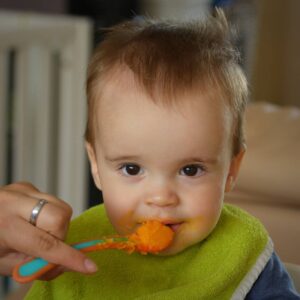
When Can Babies Eat Pureed Chicken?
Around six months of vintage, infants can start consuming solid ingredients. You can inform them they’re equipped if they can do some matters:
Hold Their Head Steady:
Babies want to keep their heads up without wobbling excessively. This facilitates them eating without choking.
Show Interest in Your Food:
If your baby watches you devour and seems curious about it, they are probably ready to strive for it themselves.
Open Their Mouth Wide and Reach for Food:
Babies need a mouth that allows them to open wide enough to absorb food or even reach for it with their palms.
Lost the Tongue-Thrust Reflex:
When toddlers are very young, they have a reflex that pushes meals out of their mouths. If they stop doing this, they’re equipped to try ingesting solid ingredients.
Once your child shows these signs and symptoms, you could start introducing them to pureed Chicken. Pureed Chicken is Chicken that’s been mashed or mixed right into a smooth, tender texture—it’s soft enough for infants to consume.
Introducing new foods separately and watching for any signs of allergies or reactions is crucial. You can begin with a small amount of pureed Chook chicken and gradually increase it as your toddler gets used to it.
Flashback: Supervise your baby while they eat and always leave them alone with meals. Speaking to your pediatrician is always a terrific concept if you have any concerns or questions.
Why is Chicken a Good First Protein for Babies?
Why is Chicken a Good First Protein for Babies? For many reasons, choosing Funk as a baby’s first protein is smart.
- Initially, Funk was loaded with iron, essential for a baby’s growth and development.
- Secondly, Funk is accessible on a baby’s breadbasket. It’s gentle and does not generally beget any worry.
- Thirdly, Funk has a mild taste that most babies like. Unlike some other flesh that might be too strong for kids with by taste, Funk is gentle and easy to enjoy.
- Incipiently, Funk is super adaptable. You can mix it up with all kinds of healthy foods, like veggies or fruits, to produce tasty treats for your little bone.
In short, Funk is a top pick for a baby’s first protein because it’s rich in iron, easy to digest, has a mild taste, and can be mixed with many other healthy foods.

Preparing Pureed Funk for Your Baby
To make sure your baby’s funk puree is safe and tasty, follow this way:
- Choose Spare Funk.
- Pick Funk without the skin or bones.
- Go for boneless funk guts or shanks.
- Cook It Well Cook the Funk until it’s wholly done outside.
- Check with a thermometer; it should reach 165 °F (74 °C). It kills any dangerous bacteria.
- Make It Smooth: Use a blender or food processor to make the Funk into a smooth paste. Babies still learn to swallow, so start with a veritably smooth puree. You can make it chunkier later as they get better at eating.
- No Extra Flavors: Do not add any swabs, pepper, or spices. Babies’ taste kids are delicate and do not need redundant flavors yet.
- No extra taste: Do not add salt, pepper, or other spices. Baby’s taste buds are still delicate and don’t require extra flavoring.
Follow these easy steps to ensure your child gets a nutritious and safe meal. Watch them grow and develop a love for good food!
Preparing Pureed Funk for Your Baby
To ensure that your baby’s funk puree is safe and tasty, follow these steps:
- Choose a spare funk.
- Pick Funk without the skin or bones. Go for boneless funk guts or shanks.
- Cook It Well Cook the Funk until it’s wholly done outside.
- Make It Smooth: Use a blender or food processor to make the Funk into a smooth paste. Babies still learn to swallow, so start with a veritably smooth puree. You can make it chunkier later as they get better at eating.
- No Extra Flavors: Do not add any swabs, pepper, or spices. Babies’ taste kids are delicate and do not need redundant flavors yet.
By following these simple ways, you can ensure your baby gets a safe and nutritious mess. Enjoy watching them grow and develop their taste for healthy foods!
Tips for Introducing Chicken to Your Baby:
- Starting Slowly: To start, supply your infant with a small quantity of hen puree, like just a teaspoon or blended with breastmilk or formula. It helps your toddler get used to the brand-new taste and texture.
- Watching for responses: Watch for your child for any symptoms of hypersensitive responses, similar to rashes, puking, or diarrhea. However, avoid giving your child funk and speak to your croaker if you notice any of these symptoms.
- Variety is important: Once your baby is comfortable with Chicken, you could try mixing it with exceptional flavors. You can blend it with pureed veggies like sweet potato, peas, or carrots. You can indeed add many fruits like applesauce or pears for a knob of agreeableness.
- Make it Fun! Mealtime must be amusing for your toddler. You can use colorful bowls and spoons, sing songs, or make humorous faces to encourage them to try their new meals.

Important Safety Reminders:
- Never leave your child unattended, even as ingesting.
- Always cut food into small portions or puree it to prevent choking.
- Don’t add honey to your child’s meals earlier than one year old.
- Be aware of capability allergens. Chicken is usually safe. However, some infants would have hypersensitive reactions to poultry. If you have a circle of relatives with records of allergic reactions, discuss introducing Chook with your pediatrician.
- Follow your pediatrician’s advice. They can provide customized guidance based on your baby’s desires and improvements.
Chicken Beyond Purees (1 Year and Up):
As your baby ages and swallows better, you can move on from purees to other food textures. Here are some ideas for trying tattered chicken when your baby is in Little Bone.
They start picking up food with their cakes, and you can give them small pieces of cooked and tattered Funk. It’s a good way for them to exercise chewing.
Soft Chicken Meatballs: Mix ground funk with mashed vegetables and baby-friendly spices (don’t add a swab). Shape them into small balls and sing them. These are easy for babies to hold and eat with their hands.
Funk in mists and stews: As your child gets used to regular food, you can add diced Funk to manual mists and stews. Cut the Funk into small bits so it’s easier for them to eat.
These different funk options can add variety to your baby’s reflections while helping them develop their eating chops. Ensure the Funk is cooked well and cut into safe sizes for your little one to enjoy!
Conclusion:
Introducing Funk to your baby can be a satisfying experience. By following these guidelines and starting sluggishly, you can ensure your little one enjoys a healthy and succulent protein source as they embark on their innovative culinary trip.
Flashback: every baby develops at their own pace. The key is to be patient and attentive and enjoy watching your child discover new flavors and textures!

FAQS
Q1. Is Chicken a good first food for my baby?
Chicken is a fantastic choice for a first protein due to its:
- High iron content: Crucial for healthy development.
- Easy digestibility: Gentle on sensitive tummies.
- Mild flavor. It is generally well-accepted by babies.
- Versatility dyads well with vegetables and fruits for added nutrients and flavor.
Q2. How do I know if my baby is ready for funk puree?
Look for these signs around six months old:
- They can hold their head steady.
- They show interest in your food.
- They open their mouth wide for food.
- They’ve lost the tongue-thrust reflex (pushing food out).
Q3. What if my baby reacts to eating Chicken?
Stop giving them Chicken and consult your pediatrician immediately. Examine for signs of disinclination, such as rashes, puking, or diarrhea.
Q4. How can I make funk puree more instigative for my baby?
- Mix it with pureed vegetables or a mixture. Sweet potato, peas, carrots, applesauce, or pears are excellent alternatives.
- Use various coliseums and ladles.
- Sing songs and make mealtime fun!
Q5. When can my baby move beyond pureed Chicken?
Around one year old, you can introduce different textures:
- Shredded Chicken: For developing chewing skills.
- Soft chicken meatballs: Baked with mashed vegetables for a fun finger food.
- Chopped Chicken in soups and stews: Once your child eats table foods.
